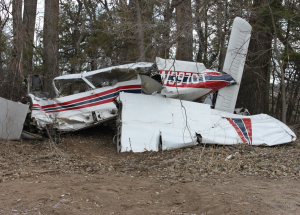By Don Karol
My son and I knew the danger we faced when we headed off to war. Scud missiles . . . rooftop snipers . . . roadside bombs . . . an enemy that wanted to kill us. Making it home safely was not a sure thing.
But when 24-year-old Maria drove home from work one night, she had no idea that driving on an interstate highway could be just as perilous as being in a war zone.
You never forget the day you receive the “death knock” at your door. I had just returned to the U.S. from my tour of duty in Iraq, but was not prepared for the ominous words that would follow. It was October 6th, 2003. The US Army knocking on my door . . . regretting to inform me that my 20-year-old son was killed in action and would not be coming home.
Four months later, on February 22, 2004, Robin Abel received a similar notification. Robin was asleep at home when she got a call from Harborview Medical Center in Seattle. Her daughter Maria was critically injured in a highway crash and was not expected to survive.
Maria was not hit by a command-detonated bomb like my son Spencer, but was hit by something just as deadly. A poorly secured entertainment center fell from the back of a trailer in front of her. The driver of the car pulling the trailer had been moving all day and had failed to properly secure the items in the trailer. A 2-by-6-foot piece of particle board flew through her windshield, hitting her in the face. Miraculously, Maria survived. However, she permanently lost her eyesight and had to endure facial reconstruction, multiple surgeries, and trauma that will last her lifetime.
 Our nation’s highways should not be like an active war zone, but they are. With over 35,000 people killed and 2.4 million injured in crashes each year, who can argue differently? Fortunately, there are warriors on the front lines—passionate safety advocates—fighting to make a difference.
Our nation’s highways should not be like an active war zone, but they are. With over 35,000 people killed and 2.4 million injured in crashes each year, who can argue differently? Fortunately, there are warriors on the front lines—passionate safety advocates—fighting to make a difference.
About 6 years ago, I met one of the fiercest (and nicest) warriors for safety, Robin Abel. We spoke on the phone after I read her book “Out of Nowhere,” the story of Robin’s determination to rebuild her daughter’s life and change road safety laws to prevent future tragedies involving unsecured loads. As I spoke with Robin, I learned how a single voice can make a powerful difference. I saw the impact Robin made in the state of Washington and learned about how legislators adopted “Maria’s Law,” which criminalizes a person’s failure to properly secure a load that results in injury or death.
Since our initial contact, I have remained in frequent communication with Robin. As a safety leader at the NTSB, I know how important it is to have safety warriors by my side. I’ve guided Robin where I can, but most of the time I’ve stood back and marveled at her tireless efforts to educate lawmakers, businesses, and individuals about the dangers posed by unsecured loads and highway debris. Most recently, I’ve seen how she has fought to establish a dedicated day of awareness.
On Memorial Day, I took time to remember my son and all the others who paid the ultimate sacrifice in the service of our country.
Tomorrow, I will take time to remember Robin’s daughter and all those who have been killed and injured in crashes involving an unsecured load. June 6th is “Secure Your Load” day; a day dedicated to raising awareness of an often-overlooked safety problem.
As a crash investigator, I have seen the tragic results of a mattress, ladder, Christmas tree, or piece of furniture falling from a moving vehicle. According to National Highway Traffic Safety Administration data, in 2010, there were about 51,000 crashes—including almost 10,000 injured persons and 440 known fatalities—involving a vehicle striking an object that came off another vehicle or an object lying in the roadway.
Recent research by the AAA Foundation for Traffic Safety estimated that road debris played a role in more than 50,000 crashes, which resulted in over 9,800 injuries and approximately 125 deaths each year from 2011 through 2014. These numbers are staggering, especially because these crashes were preventable.
So, tomorrow, share the “Secure Your Load” safety message with everyone you know. As my fellow safety warrior Robin Abel has said on many occasions: “Secure your load as if everyone you love is driving in the car behind you.”
For more information, check out the Secure Your Load PSA.
Donald F. Karol is a National Resource Specialist and Senior Accident Investigator in the NTSB Office of Highway Safety.






